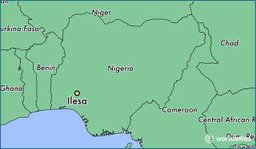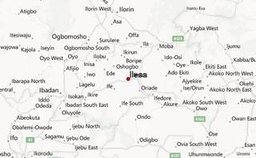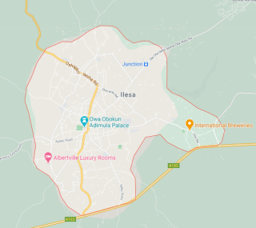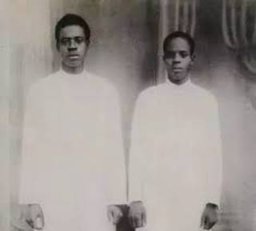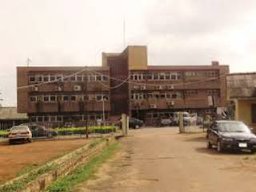Oke-Ooye Revival (1930 Revival)

Oke-Ooye Revival (1930 Revival)
History
Before the Oke-Ooye revival, Nigerian Christianity was quite ceremonial and coupled with pagan practices which was predominant and prevalent in those days.
Under this condition, in 1918, the first Prayer group (commonly known as the Aladura) started with many worshippers from Saint Saviour Anglican Church, Ijebu Ode. The group filled with the Holy Ghost, claim to have used prayer to save many lives affected by the influenza epidemic, around which time a revival took place in 1918 during the Influenza pandemic. This consolidated the prayer group. The movement grew gradually and formed branches throughout Nigeria. The name of the group went through several changes, such as Prayer Band, Precious Stone, Diamond Society, and Faith Tabernacle, in that order, until 1930.
This group was humanly led by Oba/Pastor Isaac Babalola Akinyele (late Olubadan of Ibadan), Joseph Sadare, Miss Sophia Odunlami, and D. O. Odubanjo.
The doctrinal differences between the praying group and Anglican Church over practices like healing, opposition to infant baptism, reliance on dreams and visions, debt-owing, drinking of alcohol led to tension, and some of the praying group members were compelled to withdraw from the church.
The praying group continued to thrive and spread, with member reliance on prayer, divine healing, and the All-Sufficiency of God.
Apostle Joseph Ayodele Babalola's renewal (i.e encounter) experience started on the night of September 25th, 1928 when he suddenly became restless and could not sleep. Akinwunmi explained that Apostle Joseph Ayodele Babalola experienced this for weeks without any tangible reason behind it. The climax was the sudden halt of his Steam roller engine while working on the Ilesa-Igbara-Oke road close to River ‘Ariran’ as an operator in the Public Works department.[2]
Apostle Babalola’s renewal experience (or encounter experience), similar to the conversion experience of Paul the Apostle's on his way to Damascus when he heard the voice of God ( Acts of the Apostles chapter 9). The voice described as the sound of many waters called him three times. The voice was loud and clear telling Babalola that he would die if he refused to obey God’s mission and yield to God’s call upon his life to go and preach the Word of God. Apostle Babalola's renewal experience continued with the same divine voice second time asking him to go on prayer and fasting for seven days where he had an encounter that gave precision on his divinely assigned mission. Apostle Babalola's personal renewal empowered him as a prophet with extraordinary power for his generation. Renewed by the power of the Holy Spirit, he could spend several weeks in prayer and fasting, not for personal prosperity, but for the corporate demand for God's intervention for healing and warfare.
This was the beginning of Apostle Joseph Ayodele Babalola's emergence through his personal renewal to the central prophet and the man with extraordinary powers under God during the 19th-century Healing Corporate Revival.
Dissensions and Intermission
Apostle Babalola’s intention after his encounter (i.e the renewal) was not to start a new denomination, because he declared to his ‘holy club’ members that he had registered his membership with the Faith Tabernacle, and encouraged them to do the same. A controversy arose and there was this dissension among the leaders of the Faith Tabernacle, Ilesa branch over some doctrinal issues like the use of western and traditional drugs versus divine healing, polygamy, and whether polygamy must be allowed, especially on the issue of the Eucharist.
While the leaders were meeting at Oke Oye, Ilesa between 9th to 10th of July, 1930, seeking ecclesiastical direction and reconciliation on the matters affecting the life and peace of the church like the Apostolic Council of Jerusalem in A.D.48, God was already on the move working outside the meeting. Before the reconciliatory leadership from Lagos took left for Ilesa, Apostle Babalola was invited to meet the leaders at Pastor Isaac Babalola Akinyele’s residence at Ibadan, and from Ibadan Isaac Babalola Akinyele and Joseph Ayodele Babalola traveled to join the meeting at Ilesa. Though Apostle Babalola was introduced to the Ilesa Apostolic Council Conference, he was not a delegate and part of the conference, so he was excused while the deliberation continued. The Conference was with twenty-four items on the agenda, including the validity of baptism administered to a man with many wives, and the issue of divine healing, because some of the members believed in the use of orthodox medicine like quinine to cure malaria fever. The conference was still on the first item of the twenty-four listed agenda, when there was a sudden interruption, a mighty sweeping revival broke out at Faith Tabernacle Congregation Church at Oke-Oye, Ilesa, through Apostle Babalola.
The Move Of God
The moves of God as in the days gone by had always been characterized by great awakenings and renewal of the church (i.e the Body of Christ). Similar to the move of God in the Welsh revival, the Azusa Street Revival and many other mighty moves of God was this Oke-Ooye Revival. This revival started in July 1930 by the raising of a dead body by Apostle Joseph Ayodele Babalola at Oke-Oye in Ilesa, Nigeria. God has just used him to raise a dead child, and many of those afflicted with various diseases that came to Oke-Oye were healed through the use of the prayer bell and the drinking of consecrated water from a stream called Omi Ayo (i.e Stream of Joy). Apostle Joseph Ayodele Babalola’s personal renewal resulted in the conversions of thousands of people including traditional worshippers, Muslims, and Christians from various other denominations to the Faith Tabernacle. The Ilesa Apostolic Council Conference meeting venue turned to a revival meeting, and when the hall was no longer comfortable, the meeting shifted to an open field air crusade, where men and women from all walks of life assembled daily for Prayers, healing, deliverance, and blessings. One day administrative meeting was turned to weeks of revival-meetings, where God used a non-delegate member to the conference, Apostle Joseph Ayodele Babalola to healed and cured hundreds of lepers, blind people, and lame persons. God had never been a respecter of persons, and he takes delight in announcing His name (Jehovah) even through the least-expected persons. People traveled from neighboring cities and countries to receive healing at Ilesa.
Several people were healed through the power of prayer amid evidence of the baptism of the Holy Spirit.
The revival lasted about 60 days and it is regarded as the greatest revival ever in Nigeria. Faith Tabernacle of Nigeria later invited the Apostolic Church of England in 1931 to form an Association that lasted until 1939.
Aftermath
This revival move gave rise to numerous testimonies.
Some of which include- the hopeless barren women who were made fruitful, women who had been carrying their pregnancies for long years were wonderfully delivered.
The dumb spoke and lunatics were healed and cured.
Witches confessed and many demons possessed people were exorcized.
Many Anglican, Baptist, Roman Catholic, and Wesleyan Church members transferred their church membership allegiance to the revivalist, and many patients in Wesley Hospital, Ilesa (Now OAUTHC Wesley-guild Hospital, Ilesa), abandoned their beds to seek healing from God in this revival meeting led by Apostle Ayodele Babalola. Ilesa became another Pentecost city for a corporate revival of the nation through Apostle Joseph Ayodele Babalola's personal renewal. Through Apostle Ayodele Babalola, Ilesa Pentecost spread to all parts of Nigeria. Apostle Ayodele Babalola's actions affirmed that the renewal of the church implies that the church rediscovers its apostolic, missionary character. A revelation was later given to Apostle Ayodele Babalola to burn a big tree in front of the King’s palace (Owa, Palace). The big tree was traditionally believed to be the rendezvous of witches and wizards. There was apprehension that this bold act would result in the instantaneous death of Apostle Joseph Ayodele Babalola since it was expected to arouse the anger of the gods. To the honor and glory of God, and people’s amazement, the true prophet did not die but lived, and wax stronger in the Lord’s work.[1]
The story of Apostle Joseph Ayodele Babalola, his life and work can be thus classified.
His unprecedented Oke-Ooye Revival gave birth to what is now known as the Christ Apostolic Church (C.A.C.), a Nigerian indigenous church.[3]
